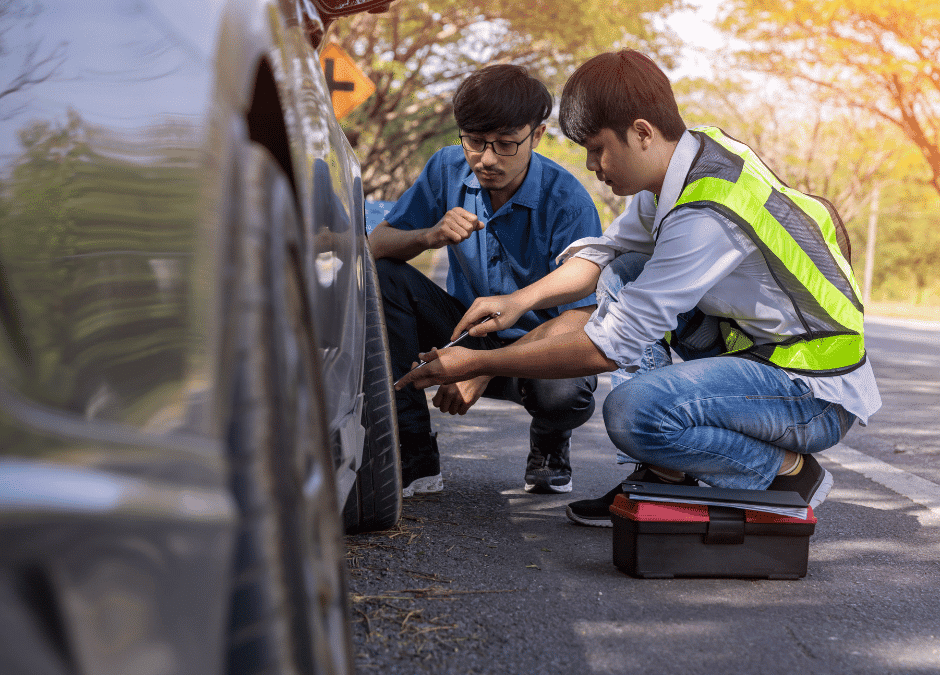Picture this: you’re cruising down the highway, enjoying a smooth drive, when suddenly, your car starts sputtering and comes to a halt. Or perhaps you experience a flat tire in the middle of nowhere. These are the moments when having a well-prepared roadside emergency kit becomes invaluable. Towing Services of Conyers understands the importance of being prepared for unexpected situations on the road. In this guide, we’ll walk you through the essential items every driver should have in their emergency kit, ensuring that you’re ready to tackle any roadside emergency that comes your way.
Be Prepared For Roadside Emergencies
When it comes to driving, preparedness is key. No one wants to find themselves stranded on the side of the road, feeling helpless and unsure of what to do next. That’s where having a well-stocked roadside emergency kit comes into play. By assembling a collection of essential items tailored to your needs, you can navigate through unexpected situations with confidence and peace of mind. Whether you face a mechanical breakdown, a flat tire, or any other roadside challenge, being prepared ensures your safety and helps you get back on the road as quickly as possible.
What is a Car Survival Kit?
A car survival kit, also known as a roadside emergency kit, is a collection of essential items designed to assist drivers during unexpected breakdowns or emergencies. It serves as a lifeline when you find yourself stuck on the side of the road, far from immediate assistance. A well-equipped car survival kit can make a significant difference in your ability to handle various situations until professional help arrives.
How to Build an Emergency Car Kit
Building an emergency car kit is a straightforward process. Here’s a step-by-step guide to help you assemble your kit:
- Choose a suitable container or bag: Select a durable container or bag that can hold all the necessary items securely. Consider using a sturdy, waterproof container to protect your emergency supplies from the elements.
- Gather the essential items: Refer to the checklist provided and gather all the essential items. Check each item off the list as you collect them.
- Organize the items: Arrange the items neatly within the container or bag. Keep frequently used items easily accessible.
- Place the kit in your vehicle: Find a designated spot in your vehicle where the emergency kit can be easily accessed in case of a roadside emergency. The trunk is a common location, but make sure it’s easily reachable even if your trunk is inaccessible.
- Regularly check and maintain your kit: Periodically inspect your emergency kit to ensure all items are in working order and not expired. Replace any used or expired items promptly.
Car Emergency Kit Checklist
To help you assemble your car emergency kit, we’ve prepared a comprehensive checklist of essential items. Use this checklist as a guide to ensure you have everything you need for any roadside emergency:
Basic Tools:
- Jumper cables
- Screwdriver set (flathead and Phillips)
- Adjustable wrench
- Pliers
- Duct tape
- Tire pressure gauge
Supplies:
- Spare tire (properly inflated)
- Jack and lug wrench
- Tire repair kit or can of tire sealant
- Flashlight and extra batteries
- Bottled water and non-perishable snacks
- Blanket or emergency thermal blanket
- Reflective blanket or emergency poncho
- Towels or rags
- Gloves and hand sanitizer
- Whistle or signaling device
- Pen and notepad
- Cash (small bills and coins)
- Maps and compass
- Phone charger (car adapter)
- Personal medications and necessary prescriptions
Remember that this checklist is a starting point, and you can personalize it based on your specific needs and environment.
Personalize Your Emergency Kit
While the checklist provides a solid foundation, it’s important to personalize your emergency kit to suit your specific needs and the environment you typically drive in. Consider the following additions based on your circumstances:
- If you frequently drive in cold climates, include extra blankets, hand warmers, and additional warm clothing.
- For long-distance or unfamiliar trips, carry a detailed road atlas or GPS device to assist with navigation.
- If you have specific medical conditions, include any necessary medications, spare eyeglasses, or medical information.
Remember, personalizing your kit ensures you’re prepared for the unique challenges you may encounter on the road.
Maintaining and Replenishing Your Kit
An emergency car kit is only effective if the items are in good working order. To ensure your kit is always ready for use, follow these maintenance tips:
- Regularly inspect your kit: Check the contents of your emergency kit every few months. Replace expired items, ensure batteries are charged, and restock any consumed supplies.
- Review your kit after every emergency: After using your emergency kit, take note of any items that need replenishing or replacing. Restock those items promptly to keep your kit complete.
- Set reminders: Schedule regular reminders to inspect and maintain your emergency kit. This will help you stay proactive and ensure your kit is always ready for any roadside emergency.
Remember, a well-maintained and replenished emergency kit is your best ally in unexpected situations.
Contact Us for Roadside Assistance Service
In the unpredictable world of driving, being prepared for roadside emergencies is paramount. By assembling a well-stocked emergency kit tailored to your needs, you can navigate through unexpected breakdowns and challenges with confidence. Remember to regularly maintain and replenish your kit.
If you find yourself in need of towing, minor repairs, lockout assistance, fuel delivery, jump-starts, or tire changes, don’t hesitate to contact professionals like Towing Services of Conyers. Our team of professionals is just a phone call away, ready to assist you in understanding your options and getting you back on the road as quickly as possible. When it comes to roadside emergencies, trust Towing Services of Conyers for reliable and prompt assistance. Contact us today for all your towing and roadside assistance needs.

Recent Comments